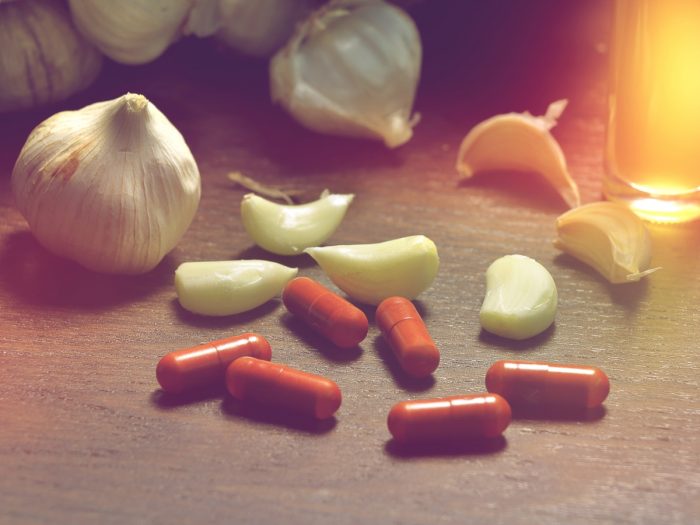There are many reasons to add garlic to your diet, and consuming garlic for blood pressure treatment is an excellent choice. Depending on your condition, using garlic can be a great way to improve your overall cardiovascular health.
Does Garlic Reduce Blood Pressure?
For anyone who struggles to control their blood pressure, they will be happy to know that garlic is one of the best natural remedies for this problem. Garlic has a number of benefits as an herb, which is why it is a popular ingredient in many cuisines. It is packed with a powerful flavor and is versatile in various dishes.
Aside from the mineral and vitamin content, garlic is most well-known for its active ingredient allicin. When you chop, chew or slice garlic, a powerful enzyme called alliinase is released, which then converts into allicin, a well-known antioxidant, and an immune system-boosting compound. [1]
It is this allicin compound that can help lower your blood pressure and relieve strain on your cardiovascular system. In numerous research studies, garlic supplements and the use of fresh garlic has been shown to have similar effects as blood pressure medication. While the exact mechanism of these effects remains a bit of a mystery, the popularity of garlic as a form of supplemental medication makes this an easily accessible way to treat high blood pressure at home. While consultation with a doctor is still strongly recommended, particularly if you have severe hypertension, garlic is a safe and effective supplement to keep your blood pressure under control. [2]

Pills and supplements provide easy access to garlic’s goodness. Photo Credit: Shutterstock
Garlic in a High Blood Pressure Diet
If you want to include garlic in your hypertension diet, there are a few guidelines. While garlic is not widely known to be dangerous, even if multiple cloves are consumed, there is a limit to how much of an effect this herb can have. The general consensus on the use of garlic in a high blood pressure diet is roughly 1/2 to 1 1/2 cloves of garlic per day. These can be eaten raw or incorporated into your food. Most studies have shown that if you have serious hypertension, the effect of eating garlic will be more noticeable, than its effect on blood pressure which is slightly above normal. [3]
Furthermore, dried garlic will not be able to produce as much allicin when it is chopped or ground up, so it is best to use fresh cloves and get as much of that beneficial chemical as possible. The best ways to add garlic to your daily diet are to mince it and add it to your stir-frys, pop a clove of garlic in a vegetable smoothie, or thinly slice the garlic cloves and add them to a salad.
Best Types of Garlic for Blood Pressure
For people who want to use garlic to mitigate the effects of hypertension, the best types of garlic to use are artichoke garlic, silverskin garlic, and rocambole garlic.
Artichoke Garlic
With a rather mild flavor, large bulbs, and fewer cloves per bulb than other types, this variety of garlic for blood pressure is particularly effective, as it is known to have high concentrations of allicin and other sulfuric compounds linked to controlling hypertension. [4]
Rocambole Garlic
This hard-neck variety of garlic is extremely flavorful and can be stored for 6-9 months before it loses much of its potential. It is commonly used for anti-inflammatory purposes in many medicinal applications. [5]
Silverskin Garlic
This is a soft-neck variety of garlic with a very strong aroma and flavor, as well as slightly pink-tinged outer layers. The strong flavor betrays some of the active ingredients that make this type of garlic for blood pressure treatment so ideal.
